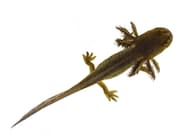Mindful
Diamond Member
- Banned
- #1

-- Scientists who assembled the genome of a salamander renowned for its ability to regenerate body parts say the achievement could be an important step toward finding ways to regrow human body parts.
The axolotl is a salamander whose only native habitat is a lake near Mexico City"It's hard to find a body part they can't regenerate: the limbs, the tail, the spinal cord, the eye, and in some species, the lens, even half of their brain has been shown to regenerate," said study co-lead author Randal Voss. He's a professor at the University of Kentucky Spinal Cord and Brain Injury Research Center.
While humans and the axolotl share many genes, the salamander's genome is 10 times larger, posing a major hurdle for genetic study.
While recent research revealed much of the genetic data for the axolotl, that information was like a pile of puzzle pieces, said co-lead author Jeramiah Smith, an associate professor of biology at the university.
That genetic puzzle had to be assembled in the right order for scientists to begin learning what gives the axolotl its remarkable powers of regeneration.
Does This Salamander Hold the Key to Regrowing Human Body Parts? - Drugs.com MedNews
